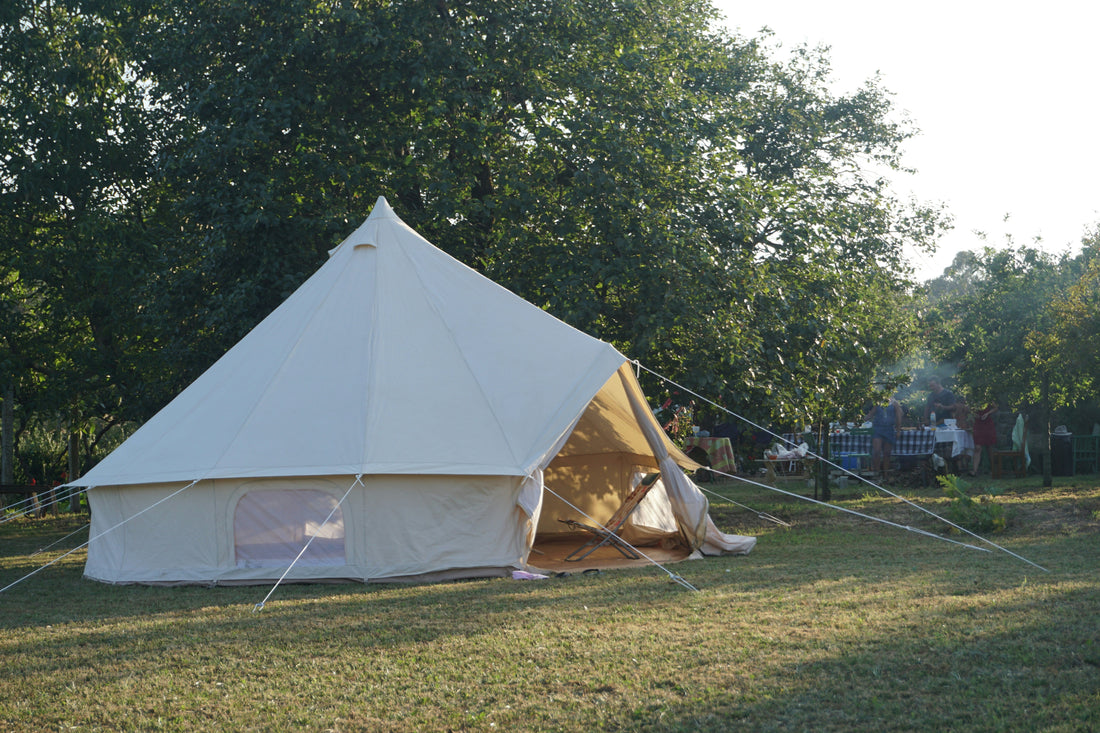
The Ultimate Beginner's Guide: How to Choose the Perfect Camping Tent
Share
Introduction
Choosing the right tent can make the difference between an unforgettable adventure and a nightmare in the wilderness. Whether you're planning a weekend escape into nature or a multi-day expedition, the right tent will provide you with the comfort, protection, and peace of mind you need. In this comprehensive guide, we'll help you find the perfect tent for your needs.
1. Types of Tents - Find Your Perfect Match
Dome Tents
Dome tents are the most popular choice among campers, and for good reason. Their dome-shaped design provides excellent stability and wind resistance, while setup is incredibly simple.
Advantages:
- Easy setup - ideal for beginners
- Excellent stability in windy conditions
- Great price-to-quality ratio
- Compact and lightweight for transport
Disadvantages:
- Less headroom compared to cabin tents
- Limited standing space
Cabin Tents
Cabin tents are ideal for family camping where comfort is a priority. With nearly vertical walls, they provide maximum interior space.
Advantages:
- Maximum interior space
- Full standing height capability
- Excellent for longer stays
- Often feature multiple rooms
Disadvantages:
- Heavier and bulkier
- More complex setup
- Less stable in wind
Tunnel Tents
Tunnel tents offer an excellent compromise between space and weight, making them popular among trekkers.
Advantages:
- Excellent space-to-weight ratio
- Good headroom
- Efficient use of space
Disadvantages:
- Require proper setup for stability
- Must be well-staked
2. Tent Capacity - How Many People?
Tent capacity ratings are often optimistic. Here are our recommendations:
The +1 Person Rule
Always choose a tent rated for one more person than you need. If you're camping with a partner, get a 3-person tent. This gives you space for gear and extra comfort.
Recommendations by Number of People:
- Solo camping: 2-person tent (space for you and gear)
- Couple: 3-person tent (comfort and luggage space)
- Family of 3-4: 6-person tent or two smaller tents
- Groups: Multiple smaller tents or one large cabin tent
3. Seasonal Use - When Are You Camping?
3-Season Tents (Spring, Summer, Fall)
These are the most common tents covering most camping scenarios. Designed for temperatures from 0°C to 30°C (32°F to 86°F).
Features:
- Good ventilation
- Protection from rain and wind
- Lighter materials
- Ideal for most camping trips
4-Season Tents (All Year)
Designed for extreme conditions, including snow and strong winds.
Features:
- Reinforced construction
- Thicker materials
- Less ventilation (better insulation)
- Heavier and more expensive
4. Materials and Waterproofing
Fabric Material
Nylon: Lightweight, durable, dries quickly. Most common choice.
Polyester: More resistant to UV rays, stretches less when wet.
Waterproofing - Understanding the Numbers
Waterproofing is measured in millimeters (mm):
- 1000-1500mm: Basic protection from light rain
- 2000-3000mm: Good protection for most conditions
- 3000-5000mm: Excellent protection from heavy rain
- 5000mm+: Premium protection for extreme conditions
Our recommendation: Minimum 3000mm for tent floor and 2000mm for rainfly.
5. Key Features to Look For
Ventilation
Good ventilation prevents condensation and maintains fresh air. Look for tents with:
- Mesh windows
- Top vents
- Double-wall construction (rainfly and inner tent)
Vestibule
A vestibule is a covered space in front of the entrance where you can store gear, shoes, and wet clothing. This is an invaluable feature that keeps the interior clean and dry.
Pole and Stake Quality
Aluminum poles: Lightweight and durable - best choice
Fiberglass poles: Cheaper but heavier and more brittle
Stakes: Look for solid, aluminum stakes with good hammer heads
Pockets and Organization
Interior pockets, lantern hooks, and organizers make camping much more pleasant.
6. Weight and Pack Size
Car Camping vs. Backpacking
Car camping: Weight isn't critical - focus on comfort and space
Backpacking/Hiking: Every gram matters - look for ultralight models
Weight Categories:
- Ultralight: Under 1.5kg (solo backpacking)
- Lightweight: 1.5-3kg (2-person backpacking)
- Medium: 3-6kg (weekend camping)
- Heavy: 6kg+ (family camping)
7. Tent Setup - Simplicity is Key
Setup Types:
Automatic tents: Set up in seconds - ideal for beginners
Traditional tents: Require 5-15 minutes - more control
Geodesic tents: More complex but most stable
Tip: Practice setup at home before your first camping trip!
8. Budget - How Much Should You Spend?
Entry Level (€50-€150)
Good for occasional camping and beginners. Expect basic features and shorter lifespan.
Mid-Range (€150-€400)
Best value for money. Excellent materials, good durability, suitable for regular camping.
Premium Level (€400+)
Top-quality materials, latest technology, designed for extreme conditions and long-term use.
9. Tent Maintenance - Extend Its Lifespan
After Each Camping Trip:
- Dry the tent completely before packing
- Clean mud and dirt
- Check for damage
- Store in a dry, cool place
Periodic Maintenance:
- Reapply waterproof coating when needed
- Repair small holes immediately
- Wash according to manufacturer's instructions
- Check poles and stakes
10. Our Top Picks from Wildcore Adventure
For Solo Adventurers:
Our Ultralight 2-3 Person Trekking Tent - only 1.6kg, waterproof PU4000, perfect for mountaineering and trekking.
For Families:
Our Premium 6-8 Person Automatic Camping Tent - automatic setup, spacious, ideal for family camping trips.
Conclusion
Choosing the right tent depends on your specific needs - where you're camping, with whom, what season, and how often. Don't rush your decision - a good tent is an investment that will serve you for years.
Key Factors to Remember:
- Always choose larger capacity than you need
- Minimum 3000mm waterproofing for floor
- Good ventilation is crucial
- Practice setup before your trip
- Invest in quality if you camp frequently
Ready for your next adventure? Visit our premium tents collection and find the perfect model for you!
Happy camping! 🏕️
